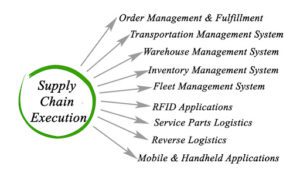An order management system is an important part of any successful business. It allows businesses to streamline their processes and automate their ordering process, making it easier for customers to place orders and for businesses to keep track of them. With an effective order management system, organizations are able to manage inventory levels more efficiently, reduce costs and increase customer satisfaction. Additionally, the ability to track orders in real-time helps organizations determine where they can improve their operations and make sure orders are shipped on time. In short, an order management system is a key tool in optimizing business operations and improving customer service.
Features of an Order Management System
If you are in the business of managing orders, having the right Order Management System (OMS) is essential to your success. Don’t wait any longer – explore order management system solutions today and take control of your business, click the link: https://www.esker.com.sg/solutions/order-cash/order-processing/. To help you understand what features and capabilities a good OMS should have, here is an overview of five features that every system should have.
- Automation of Processes: Automating processes helps to increase efficiency and reduce manual errors which can cost businesses valuable time and money. A good OMS will automate all aspects of order management, from order receipt to order fulfilment. This includes automatically processing customer requests for returns or refunds, creating shipping labels for orders, updating inventory levels in real time, and more.
- Advanced Reporting and Analytics Capabilities: A good OMS should provide users with advanced reporting capabilities that allow them to track key performance indicators such as sales figures or customer retention rates over time. It should also be able to generate detailed reports on customer activity over specific periods so businesses can better understand their customers’ behaviour patterns.
- Real-Time Inventory Updates: Staying on top of inventory levels is essential for any business whose products are sold online or through physical stores alike as it allows them to keep up with demand while avoiding costly stockouts or surpluses of certain items.
Key Benefits of an Order Management System
The success of any business is heavily reliant on its ability to effectively manage orders. An order management system (OMS) provides businesses with a comprehensive platform for managing all aspects of an order, from the point of sale to delivery. This article will outline the key benefits that a modern OMS can bring to businesses today.
- Improved Efficiency in the Supply Chain Processes
An effective OMS minimises errors and delays across all stages of the supply chain process, giving businesses increased agility and control over their operations. With real-time tracking and alerts for orders, businesses can quickly identify issues as they arise, ensuring that shipments are delivered on time and customer expectations are met consistently. Additionally, automated processes such as purchasing and inventory replenishment help streamline operations even further by eliminating manual tasks typically associated with these activities.
B . Enhanced Customer Service Experience
Customer service is paramount when it comes to maintaining customer loyalty and satisfaction levels over time. A quality OMS allows businesses to improve their customer service experience by providing customers access to up-to-date information regarding their orders at any given time throughout the entire process – from order placement right through until delivery or collection has been completed successfully.
Challenges Faced With Implementing an OMS
The implementation of an Order Management System (OMS) can be a daunting task for many businesses. OMS systems offer the potential to streamline operations, improve customer service, and reduce costs. However, there are several challenges that companies should consider before taking on this endeavour.
Cost Considerations: The cost of implementing an OMS may seem prohibitive at first glance. However, when you factor in the long-term benefits—such as improved efficiency, increased customer satisfaction, and decreased operational costs—the return on investment can be significant. Companies need to carefully weigh the short-term costs against long-term gains before making a decision.
Complexity Involved in Integrating Different Systems: An OMS is only effective if it can seamlessly integrate with other existing systems within an organization such as inventory management or warehouse management systems. This process can be complex and time-consuming as different technologies must be connected and data must be accurately exchanged between them all in order for it to function properly.
Difficulty Adapting to New Technologies: Many companies struggle with adapting their existing processes and technology infrastructure to accommodate new technologies like an OMS system. It requires careful planning and training of employees so they understand how the new system works and how it fits into their current.

Conclusion
The implementation of an order management system can be a great asset for any business. It can help streamline the ordering process, improve customer service, and reduce costs by reducing paperwork and manual processes. It also helps to ensure accurate data collection and analysis, which can help businesses make better-informed decisions going forward. Ultimately, an order management system can be a powerful tool for businesses looking to maximize their efficiency and profitability.
